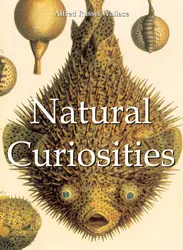The discovery of America opened up to the civilized world many new objects of interest in the animal, vegetable, and mineral kingdoms. Not the least in interest was the discovery of an extensive group of birds, consisting of several hundred species, whose diminutive size, quickness of motion, boldness of demeanor, elegance of form, and exquisite beauty of plumage, attracted the attention and secured the admiration of every lover of Nature.
The larger portion of these birds live in the West Indies and the tropical regions of America…
Humming-birds are, in many respects, unusually interesting and instructive. They are highly peculiar in form, in structure, and in habits, and are quite unrivalled as regards variety and beauty. Though the name is familiar to everyone, few but naturalists are acquainted with the many curious facts in their history, or know how much material they afford for admiration and study. It is proposed, therefore, to give a brief and popular account of the form, structure, habits, distribution, and affinities, of this remarkable family of birds, as illustrative of the teeming luxuriance of tropical nature, and as throwing light on some of the most interesting problems of natural history.
À PROPOS DE L'AUTEUR
Alfred Russel Wallace (1823-1913) was a British naturalist and explorer, co-discoverer of the theory of evolution by natural selection alongside Charles Darwin. He explored the Amazon and the Malay Archipelago, where he identified the Wallace Line, separating Asian and Australian fauna. A pioneer of biogeography, he also studied warning coloration and the Wallace Effect. A radical thinker, he defended spiritualism and criticized social injustice. Honored with several medals, he left a lasting impact on science.












